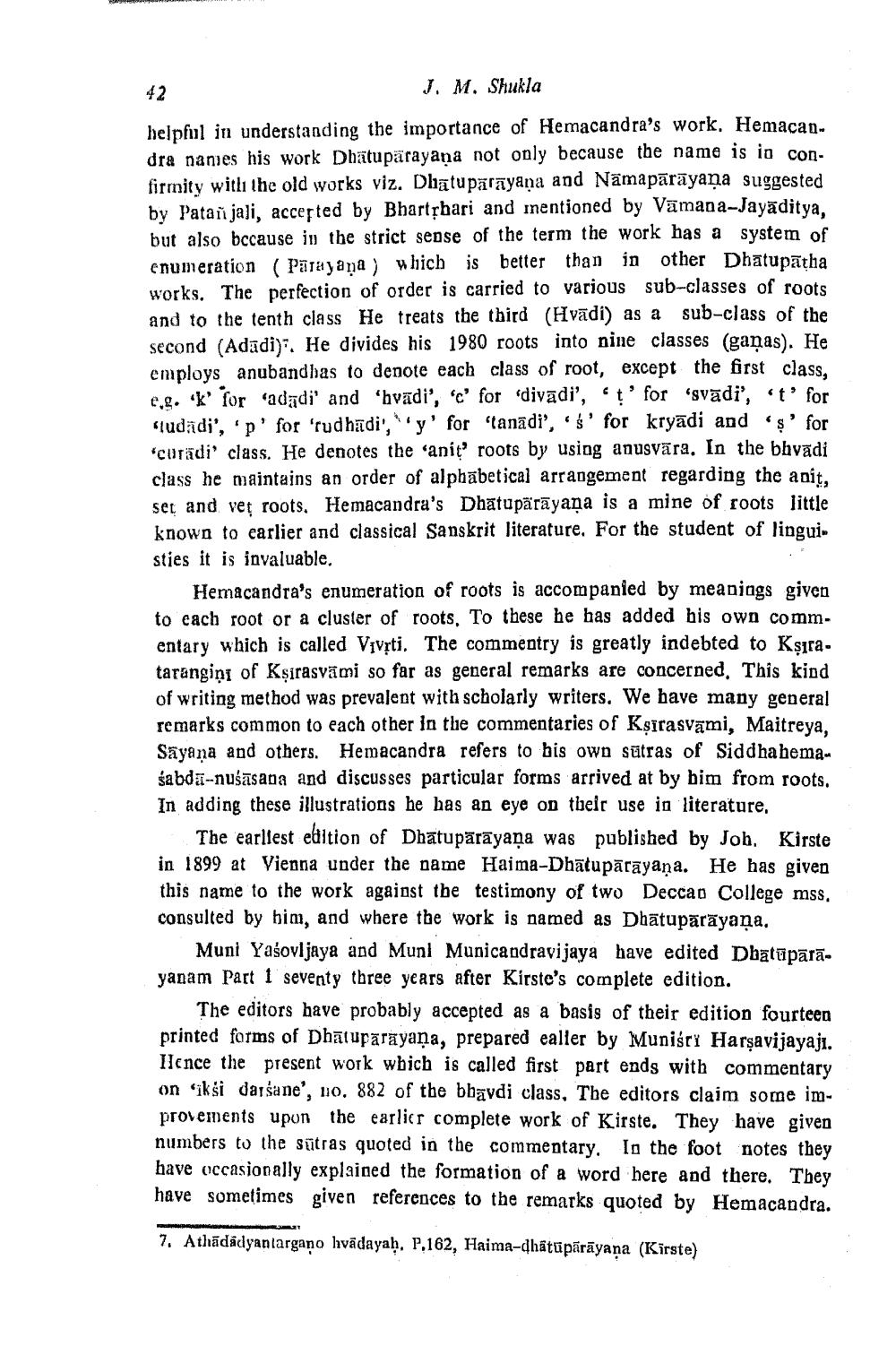________________
42
J. M. Shukla
helpful in understanding the importance of Hemacandra's work. Hemacan. dra nanies his work Dhätupärayana not only because the name is in confirmity with the old works viz. Dhātuparāyana and Näma pārāyaṇa suggested by Patañjali, accepted by Bhartphari and mentioned by Vämana-Jayaditya, but also because in the strict sense of the term the work has a system of enumeration ( Parayana) which is better than in other Dhatupātha works. The perfection of order is carried to various sub-classes of roots and to the tenth class He treats the third (Hvādi) as a sub-class of the second (Adadi). He divides his 1980 roots into nine classes (ganas). He employs anubandhas to denote each class of root, except the first class, e.g. 'k' for 'adidi' and 'hvadi', 'c' for 'divadi', 't' for 'svādi', 't' for
udadi', 'p' for 'rudhadi', 'y' for 'lanadi', 's' for kryādi and 's' for corädi' class. He denotes the sanit roots by using anusvāra. In the bhvadi class he maintains an order of alphabetical arrangement regarding the anit, set and vet roots. Hemacandra's Dhātupärāyaṇa is a mine of roots little known to earlier and classical Sanskrit literature. For the student of lingui. sties it is invaluable.
Hemacandra's enumeration of roots is accompanied by meanings given to cach root or a cluster of roots. To these he has added his own comm. entary which is called Vivrti. The commentry is greatly indebted to Kșira. tarangint of Ksirasvami so far as general remarks are concerned. This kind of writing method was prevalent with scholarly writers. We have many general remarks common to each other in the commentaries of Ksirasvāmi, Maitreya, Sayana and others. Hemacandra refers to his own sütras of Siddhahema. sabda-nusasana and discusses particular forms arrived at by bim from roots. In adding these illustrations he has an eye on their use in literature,
The earliest edition of Dhatupārāyaṇa was published by Joh. Kirste in 1899 at Vienna under the name Haima-Dhātupārāyaṇa. He has given this name to the work against the testimony of two Deccan College mss. consulted by him, and where the work is named as Dhātupārāyana,
Muni Yasovljaya and Muni Municandravijaya have edited Dbatüpārāyanam Part 1 seventy three years after Kirste's complete edition.
The editors have probably accepted as a basis of their edition fourteen printed forms of Dhātufārāyana, prepared ealler by Munisri Harşavijayajı. Hence the present work which is called first part ends with commentary on ikši darśane', 10. 882 of the bhāvdi class, The editors claim some improvements upon the earlier complete work of Kirste. They have given numbers to the sütras quoted in the commentary. In the footnotes they have occasionally explained the formation of a word bere and there. They have sometimes given references to the remarks quoted by Hemacandra.
7. Athādádyantargano hvādayaḥ, P.162, Haima-dhâtūpārāyana (Kirste)




